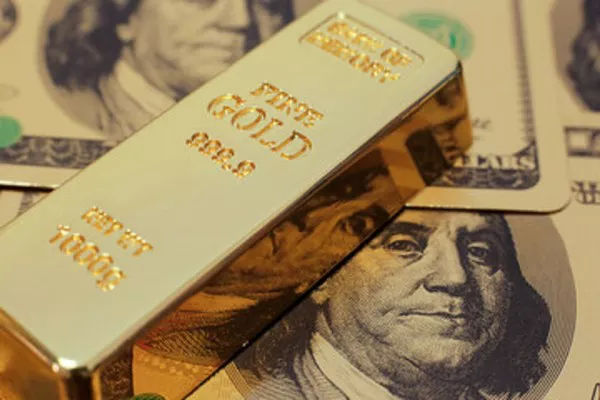As the financial markets began the week on a high note, Bitcoin prices soared to $66,000, leaving gold lagging behind. While equities and cryptocurrencies displayed a risk-on sentiment among investors, persistent concerns regarding future interest rate cuts amid sticky inflation have created a complex landscape for asset prices.
Bitcoin Reaches New Heights
On October 14, Bitcoin (BTC) experienced a significant surge, reaching a peak of $66,400, the highest price since July 30. The uptick came as a result of robust buying activity from U.S. investors during the Asian trading session, pushing BTC/USD to nearly two-week highs. Data from Cointelegraph Markets Pro and TradingView indicated that Bitcoin prices were up by approximately 5% for the day.
Trading resources such as Material Indicators highlighted that Bitcoin whales, or large holders of the cryptocurrency, have resumed their purchasing activity at current levels. Observers noted, “We’re watching to see if brown Mega Whales appear with a significant market order to break through the sell wall at $65.5k,” indicating the potential for further upward momentum if significant buying pressure continues.
Publicly traded companies connected to cryptocurrency markets also reaped the benefits of Bitcoin’s rise. Miner CleanSpark (CLSK) led the day’s performance with a remarkable gain of 12.72%, closing at $10.81 and further rising to $11 in after-hours trading. Meanwhile, crypto exchange Coinbase (COIN) saw an 11.3% increase, closing the day at $196.35—its highest level in seven weeks. The stock climbed to $199.70 in after-hours trading. Other notable performers included IREN, formerly Iris Energy, which recorded a 10.21% gain, while TeraWulf (WULF) and Marathon Digital Holdings (MARA) saw increases of 6.65% and 5.6%, respectively.
Gold Faces Headwinds
In contrast to the upward trajectory of Bitcoin and stocks, the gold market struggled on Monday. Early trading showed a choppy performance for gold, indicating the complexities it faces. As of 2:35 PM ET (6:35 PM GMT), spot gold had declined by 0.2%, settling at $2,649.98 per ounce after reaching a weekly high earlier in the day. U.S. gold futures experienced a more significant drop of 0.4%, closing at $2,665.60.
Analysts pointed to several factors contributing to gold’s struggles. Phillip Streible, chief market strategist at Blue Line Futures, identified multiple “little headwinds” impacting the market, including China’s extensive economic stimulus measures, a stronger U.S. dollar, a weaker euro, declining base metals prices, and ongoing profit-taking activities. The recent rally in gold prices had led to a dip in investor sentiment and reduced demand for bullion in China.
The strength of the U.S. dollar further complicated matters for gold. A stronger dollar typically makes gold more expensive for holders of other currencies, which can dampen demand. Zain Vawda, a market analyst at MarketPulse by OANDA, commented on the mixed signals from Chinese economic data. He suggested that while weak economic data could diminish gold demand, a broader slowdown in China might increase gold’s appeal as a safe-haven asset amid market uncertainties.
Market Dynamics and Investor Sentiment
The contrasting performances of Bitcoin and gold illustrate the shifting dynamics in investor sentiment. While Bitcoin and stocks are experiencing a rally, gold remains under pressure, reflecting a broader risk appetite among investors. The “risk-on” sentiment has been characterized by a willingness to invest in assets perceived as higher risk, such as cryptocurrencies and equities, while gold—a traditional safe haven—has faced challenges in maintaining its allure.
Investors are closely monitoring inflation rates and potential interest rate adjustments from central banks, which play a significant role in shaping market trends. The current environment of persistent inflation has created uncertainty regarding future interest rate cuts, prompting many investors to pivot toward riskier assets. As a result, gold, often seen as a hedge against inflation, has seen diminished demand despite its historical role as a safe-haven investment.
Implications for Future Trading
Looking ahead, the contrasting trends between Bitcoin and gold raise questions about their respective roles in investment portfolios. Bitcoin’s recent surge highlights its potential for rapid price movements, driven by significant buying pressure from large holders. This could position Bitcoin as an appealing option for risk-tolerant investors seeking growth.
On the other hand, gold’s current challenges may lead investors to reevaluate its place in their portfolios. The persistence of economic uncertainties, particularly in major markets like China and the United States, could drive demand for gold as a safe-haven asset, especially if equity markets become more volatile.
Market analysts suggest that as long as inflation remains a concern and interest rates are uncertain, investors will continue to navigate between risk-on assets like Bitcoin and traditional safe havens like gold. The potential for Bitcoin to reach new highs could attract more retail investors, further complicating gold’s position in the market.
Conclusion
As Bitcoin surges to $66,000, the gold market faces a complex set of challenges. The contrast in performance between these two asset classes reflects broader shifts in investor sentiment and market dynamics. While Bitcoin benefits from renewed interest and purchasing activity, gold struggles against headwinds that include economic stimuli from China and a strengthening U.S. dollar.
Investors will need to remain vigilant as they navigate these evolving markets. With persistent inflation and uncertain interest rates continuing to influence investment strategies, the roles of Bitcoin and gold will remain closely scrutinized in the months to come.
Related topics:

